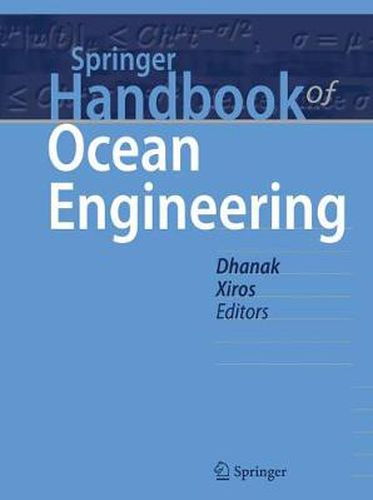Readings Newsletter
Become a Readings Member to make your shopping experience even easier.
Sign in or sign up for free!
You’re not far away from qualifying for FREE standard shipping within Australia
You’ve qualified for FREE standard shipping within Australia
The cart is loading…






This handbook is the definitive reference for the interdisciplinary field that is ocean engineering. It integrates the coverage of fundamental and applied material and encompasses a diverse spectrum of systems, concepts and operations in the maritime environment, as well as providing a comprehensive update on contemporary, leading-edge ocean technologies. Coverage includes an overview on the fundamentals of ocean science, ocean signals and instrumentation, coastal structures, developments in ocean energy technologies and ocean vehicles and automation. It aims at practitioners in a range of offshore industries and naval establishments as well as academic researchers and graduate students in ocean, coastal, offshore and marine engineering and naval architecture.
The Springer Handbook of Ocean Engineering is organized in five parts: Part A: Fundamentals, Part B: Autonomous Ocean Vehicles, Subsystems and Control, Part C: Coastal Design, Part D: Offshore Technologies, Part E: Energy Conversion
$9.00 standard shipping within Australia
FREE standard shipping within Australia for orders over $100.00
Express & International shipping calculated at checkout
This handbook is the definitive reference for the interdisciplinary field that is ocean engineering. It integrates the coverage of fundamental and applied material and encompasses a diverse spectrum of systems, concepts and operations in the maritime environment, as well as providing a comprehensive update on contemporary, leading-edge ocean technologies. Coverage includes an overview on the fundamentals of ocean science, ocean signals and instrumentation, coastal structures, developments in ocean energy technologies and ocean vehicles and automation. It aims at practitioners in a range of offshore industries and naval establishments as well as academic researchers and graduate students in ocean, coastal, offshore and marine engineering and naval architecture.
The Springer Handbook of Ocean Engineering is organized in five parts: Part A: Fundamentals, Part B: Autonomous Ocean Vehicles, Subsystems and Control, Part C: Coastal Design, Part D: Offshore Technologies, Part E: Energy Conversion